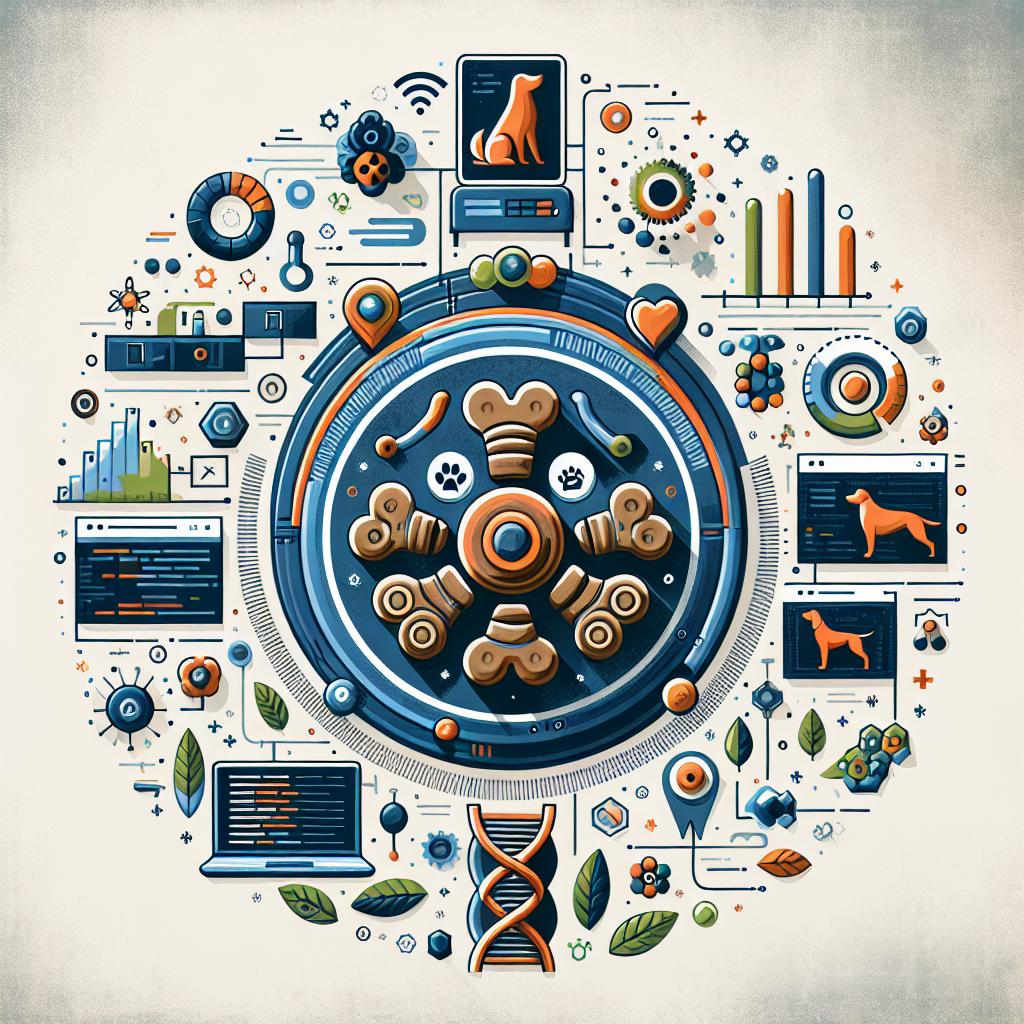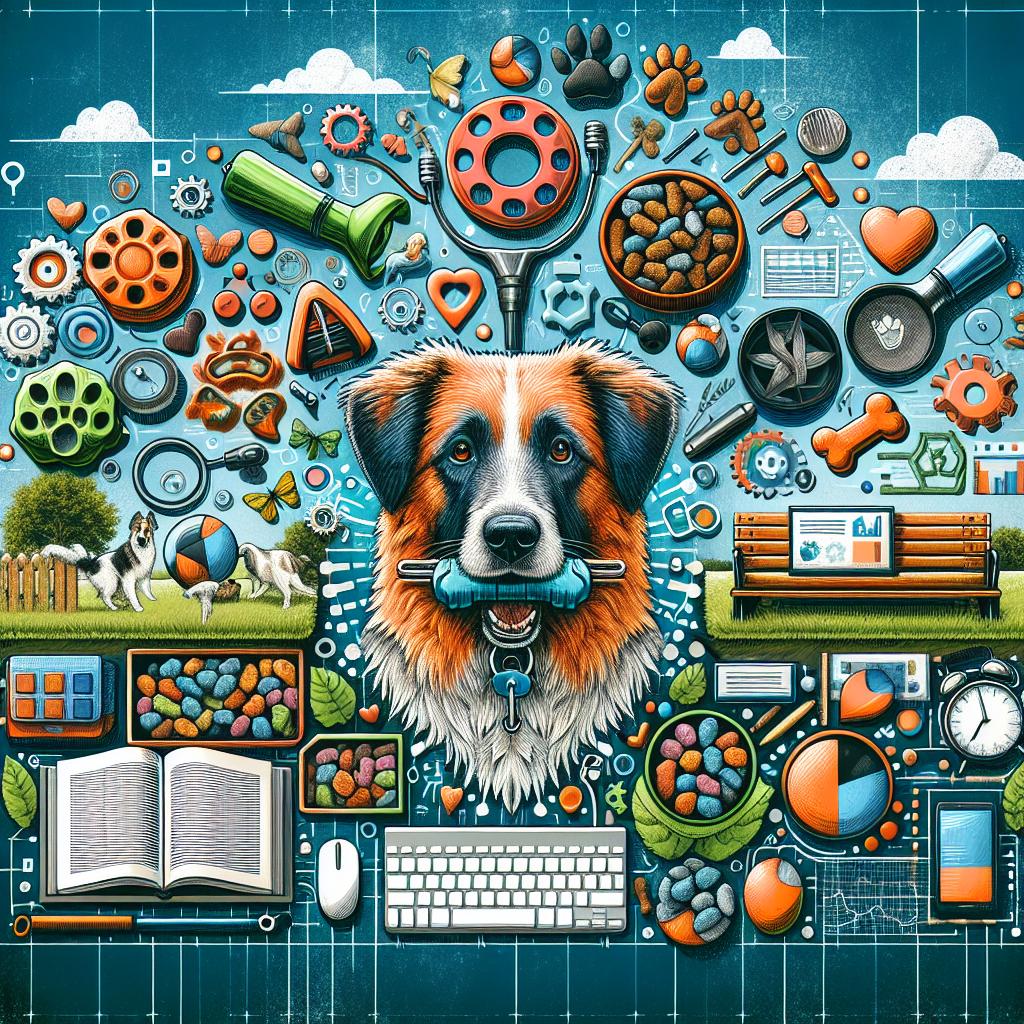Title: The Art of Motivation: How to Use Treats Effectively in Dog Training
When it comes to training our furry companions, food often commands attention like nothing else. Treats can be powerful tools in the art of dog training, transforming mere commands into engaging interactions that foster learning and strengthen bonds. But how can pet owners wield this tempting motivator effectively without inadvertently encouraging undesirable behaviors or creating a dependent relationship? In this article, we will explore the nuances of using treats in dog training, offering practical strategies and insights to help you navigate this rewarding journey. From selecting the right rewards to timing and technique, we’ll unlock the secrets to turning training sessions into productive and enjoyable experiences for both you and your canine companion. Join us as we delve into the world of canine motivation, ensuring that every treat serves a purpose and every command reinforces a loving connection.
Understanding the Role of Treats in Positive Reinforcement
In the world of dog training, the strategic use of treats serves as a potent method for encouraging desired behaviors through positive reinforcement. When a dog successfully completes a command or trick, the immediate reward of a treat forms a strong association between the behavior and the affirmation. This can lead to improved obedience and stronger bonds between the dog and handler. Consider the following points to maximize the effectiveness of treats:
- Timing is crucial: Rewarding your dog immediately after they perform the desired action helps reinforce the behavior.
- Quality matters: Use high-value treats that your dog loves, especially when teaching new commands or during challenging training sessions.
- Variety keeps it engaging: Rotate the types of treats to maintain your dog’s interest and motivation.
Moreover, it’s essential to maintain balance in treat usage. Relying solely on treats can lead to over-dependence; therefore, integrating other forms of rewards, such as verbal praise or playtime, can create a more well-rounded training experience. To ensure effective use of treats without risking excessive weight gain, it’s wise to consider portion control. The following table illustrates suggested treat portions based on your dog’s weight:
| Dog Weight (lbs) | Daily Treat Allowance (Calories) |
|---|---|
| 1-10 | 10 calories |
| 11-20 | 20 calories |
| 21-50 | 30 calories |
| 51+ | 50 calories |

Choosing the Right Treats for Effective Training Sessions
Choosing the right rewards can significantly impact your dog’s responsiveness during training. While some dogs may be motivated by small, soft treats, others might prefer chewy or crunchy options. It’s important to observe your dog’s preferences, as this can make a world of difference in their enthusiasm for training sessions. You might also consider varying the type of treat based on the complexity of the command; higher-value treats, such as pieces of cooked chicken or cheese, can be used for advanced tasks, while simpler treats can suffice for routine commands.
When selecting treats, keep health in mind. Opt for low-calorie options that allow for repeated rewards without overindulging your furry friend. Here’s a quick reference chart of ideal treat characteristics:
| Type of Treat | Best Use |
|---|---|
| Soft Treats | High-focus training, puppies |
| Crispy or Crunchy Treats | Basic commands, distraction training |
| Homemade Treats | Customization for allergies or preferences |
| Commercial Training Treats | Convenient for on-the-go training |
Always maintain a balance between enjoyment and health; your goal is to create a positive association with learning, not to overload your dog with calories. Make sure to adjust meal portions as needed, so your dog stays fit and happy while mastering new commands!
Timing and Frequency: Maximizing the Impact of Treat Rewards
When it comes to using treats in dog training, the timing of the reward is crucial for reinforcing desired behaviors. Immediate reinforcement is key; the reward should come the moment your dog performs the action you want to encourage. This association between the behavior and the reward helps your dog understand that they have done something right. To optimize this, consider the following tips:
- Be consistent – Always reward the same behavior.
- Use varied rewards – Mix high-value treats with regular ones to maintain interest.
- Observe your dog’s demeanor – Adjust your timing based on their excitement and focus.
Frequency is another essential factor. Initially, you may need to reward your dog more frequently to establish a new behavior. As your dog becomes more reliable, you can gradually reduce the frequency of rewards. This method, known as variable reinforcement, keeps your dog engaged while preventing them from becoming overly reliant on treats. You can track your progress using a simple frequency table to gauge the effectiveness of your training sessions:
| Session | Reward Frequency | Notes |
|---|---|---|
| 1 | Every command | High excitement |
| 2 | Every other command | Moderate engagement |
| 3 | Randomized | Maintained behavior |

Transitioning from Treats to Other Reinforcement Methods
As you progress in your dog’s training, it’s essential to diversify the types of reinforcement you provide. Transitioning from treats can help your dog maintain enthusiasm and responsiveness while encouraging them to respond positively to various forms of rewards. Start by introducing praise, toys, or playtime as alternatives to treat rewards. You might notice that while your pooch is used to earning goodies, they also respond enthusiastically to verbal affirmations or their favorite ball. This helps embed the idea that good behavior brings more than just tasty snacks.
Consider creating a reinforcement schedule that gradually decreases the reliance on treats. This approach fosters a mindset where the dog understands that good behavior yields various rewards. The reinforcement could relate to activities or social interactions, enhancing the emotional bond between you and your furry friend. Below are some rewarding options to include in your training repertoire:
| Reinforcement Type | Example |
|---|---|
| Praise | “Good dog!” spoken in an enthusiastic tone |
| Playtime | Engaging with their favorite toy |
| Social Interaction | Petting or cuddling after a successful command |
| Access to Favorite Spot | Allowing them to explore a new area or room |
Q&A
Q: Why are treats important in dog training?
A: Treats play a crucial role in dog training as they serve as positive reinforcement. They help to create a strong association between the desired behavior and a reward, making the training process more enjoyable and effective for your dog.
Q: What types of treats should I use for training?
A: The best training treats are small, soft, and easy to chew. They should be highly palatable and ideally low in calories, allowing you to give multiple treats without overfeeding your dog. Some popular choices include pieces of chicken, cheese, or specially formulated training treats.
Q: How do I determine the right amount of treats to give?
A: A good rule of thumb is to ensure the treats make up no more than 10% of your dog’s daily caloric intake. Be mindful of your dog’s size and adjust the treat size accordingly for positive reinforcement without excess calories.
Q: How can I effectively use treats during training sessions?
A: Timing is key! Offer a treat immediately after your dog performs the desired behavior to reinforce the action. This creates a clear connection in your dog’s mind. Mix up the treats occasionally to keep your dog intrigued and motivated.
Q: Should I always use treats for every command?
A: While treats are effective, you can gradually phase them out as your dog becomes more proficient. Use treats generously at first, then move to a variable reinforcement schedule, rewarding your dog some of the time. This keeps the behavior consistent and your dog engaged.
Q: What if my dog loses interest in treats?
A: If your dog seems uninterested in treats, it may be time to spice things up! Try different flavors, textures, or even switch to toys or play as a reward. Remember, every dog is unique, so it may take some experimentation to find what really excites your pup.
Q: Can I use treats in conjunction with other training methods?
A: Absolutely! Treats can be effectively combined with other training techniques such as clicker training, verbal praise, or physical affection. This multi-faceted approach can help reinforce the learning process and strengthen your bond with your dog.
Q: Should I reward my dog for just any behavior?
A: It’s important to reward specifically for behaviors you want to encourage. Avoid giving treats for unwanted behaviors, as this can create confusion. Always focus on rewarding positive actions and guiding your dog towards the desired behaviors.
Q: What’s the best way to keep my dog motivated during training?
A: Keep training sessions engaging and fun! Change up the location, introduce new commands, and maintain a positive attitude. Make sure to offer high-value treats that your dog really loves, turning training into a fun game rather than a chore.
Q: How often should I conduct training sessions using treats?
A: Short, frequent sessions are generally more effective than long, infrequent ones. Aim for 5-10 minute sessions a couple of times a day to keep your dog engaged without overwhelming them. Regular practice helps reinforce learning and creates lasting habits.
To Conclude
incorporating treats into your dog training regimen can be a powerful and effective tool when used thoughtfully and strategically. By understanding the nuances of timing, portion control, and your dog’s unique preferences, you can elevate your training sessions from mundane to motivational. Remember, the path to a well-trained dog is paved with patience, consistency, and a sprinkle of positivity. As you embark on this rewarding journey, keep experimenting and fine-tuning your approach—embracing both successes and setbacks—as they all contribute to a deeper bond with your furry companion. So go ahead, grab those treats and transform your training sessions into delightful learning experiences. Your dog will thank you with wagging tails and joyful barks!

